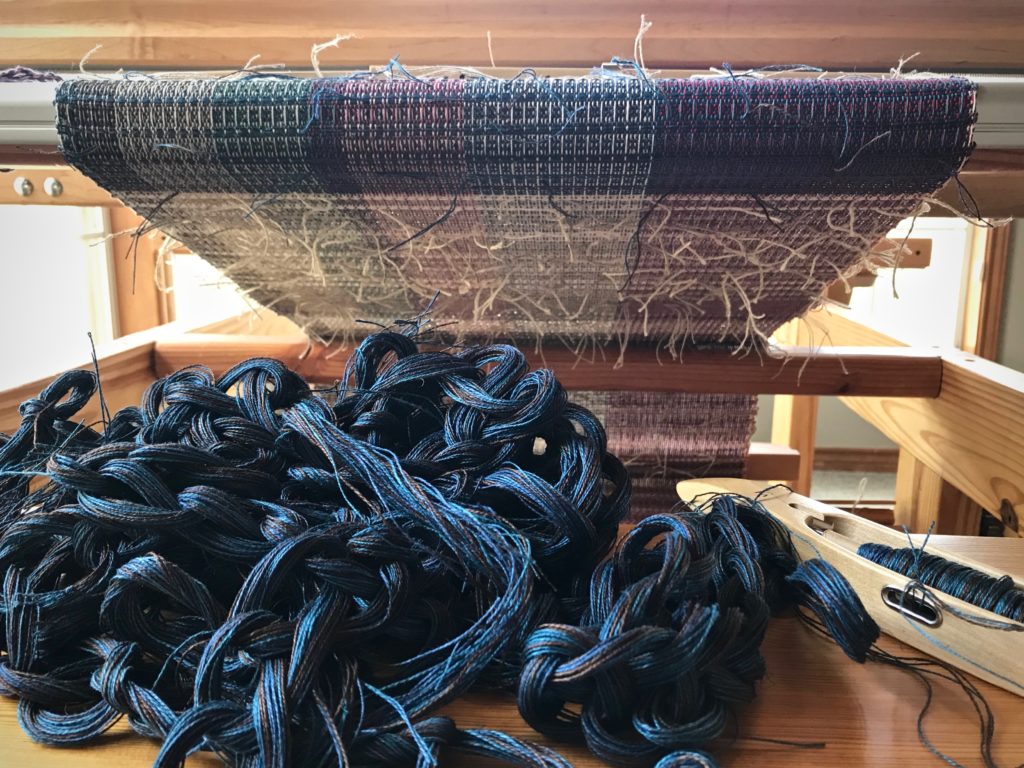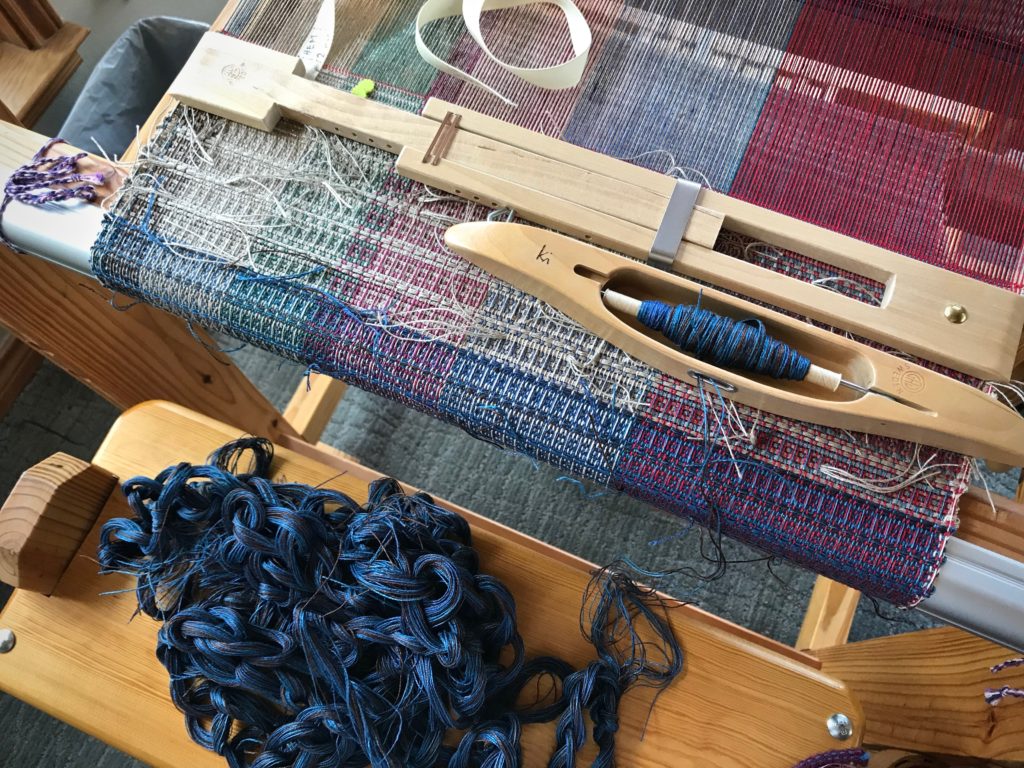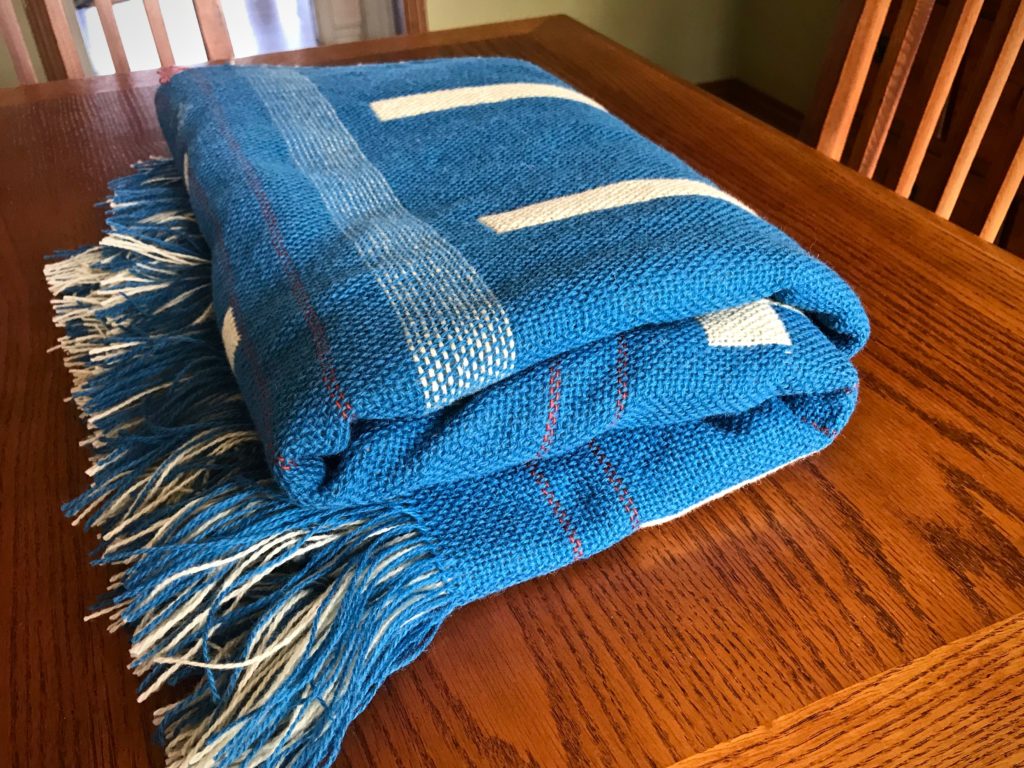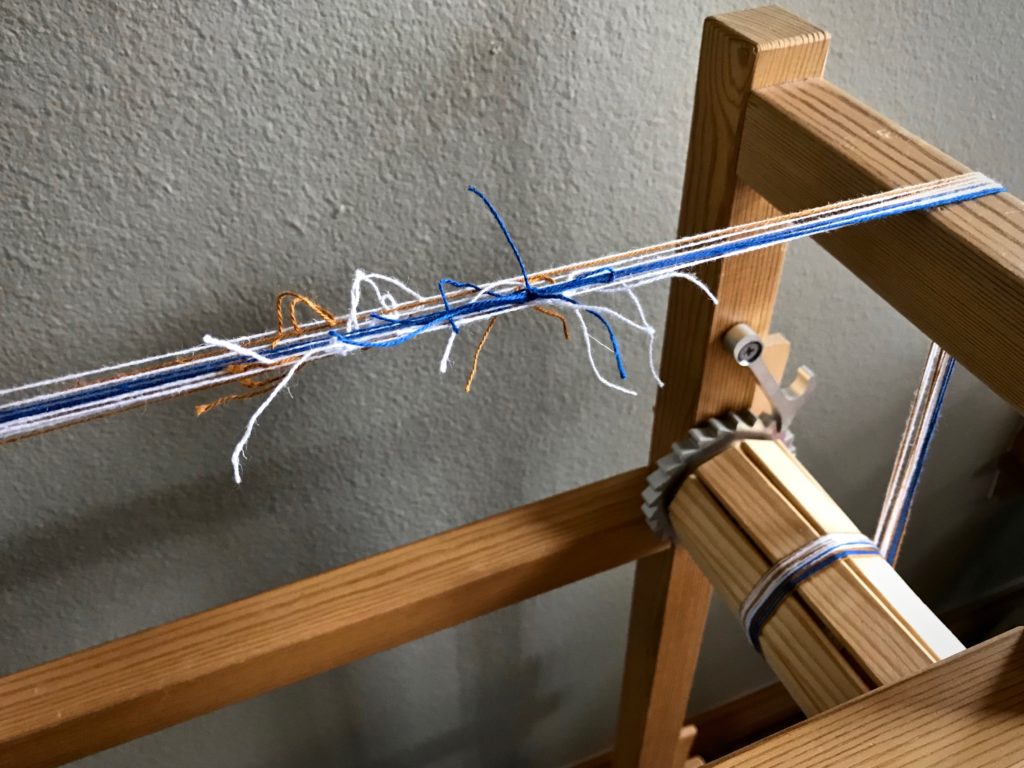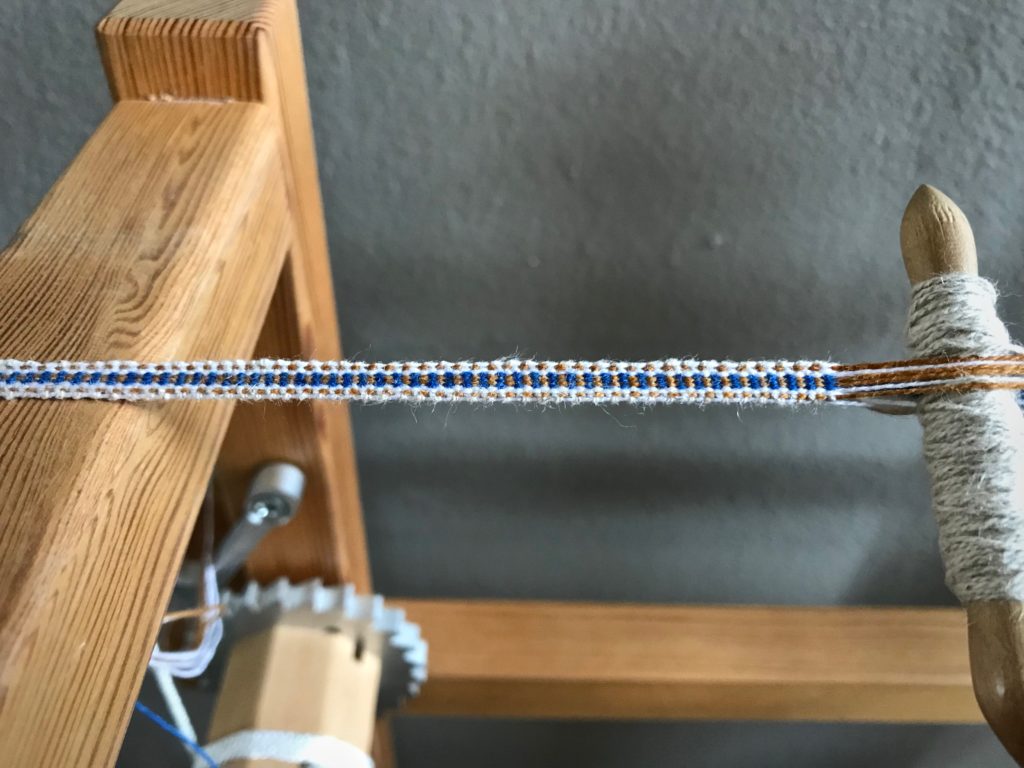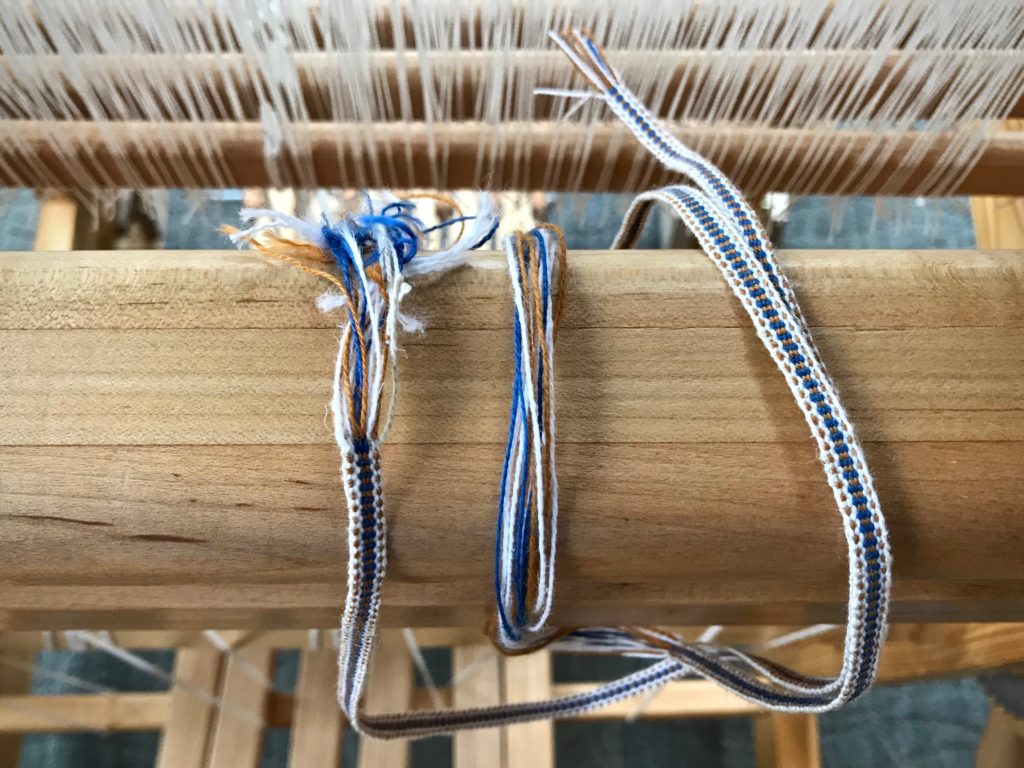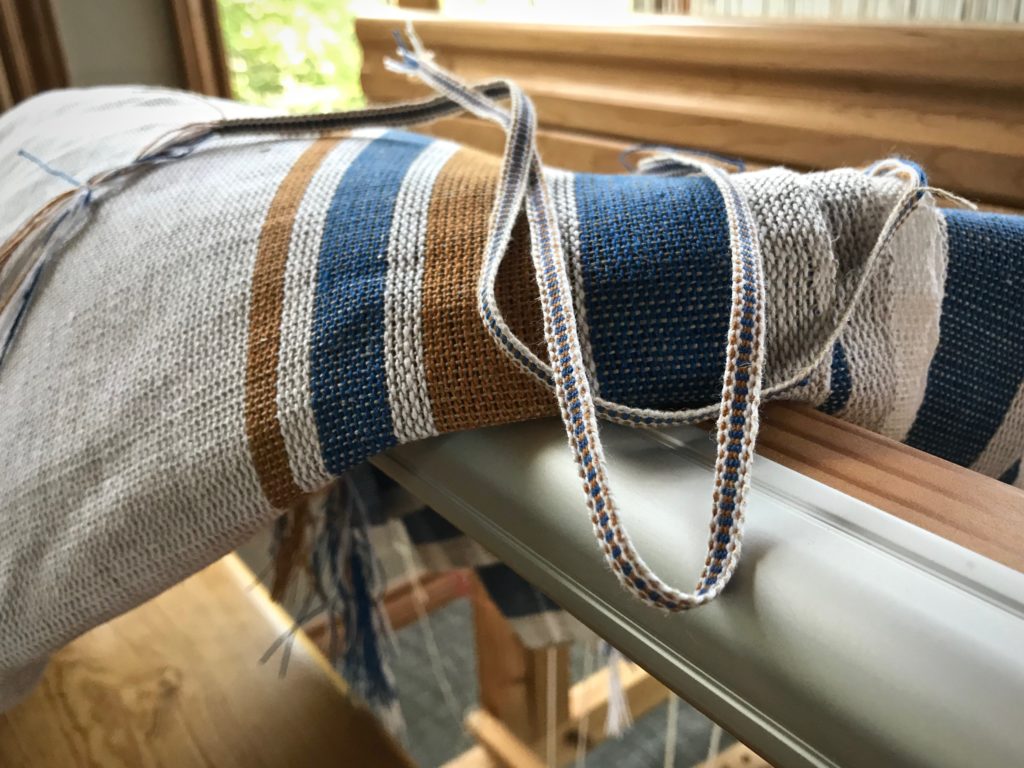Remember that time you miscalculated when planning your warp? You found the mistake when you were threading, and you ended up with an extra group of ends. If you have ever done something like that, then you understand where this leftover linen warp came from.

This little linen leftover warp is now on the Glimåkra band loom. I removed two ends to get a warp with symmetrical colors. It’s perfect for making hanging tabs to go on the leftover linen waffle weave washcloths. The weft on these band loom shuttles is from one of the little linen warp chains I mentioned last week. (See Put the Linen Back to Use.)


When the thread comes to an end on the shuttle, I follow this simple process to begin a new weft.
- Place the ending weft through the shed, leaving a tail of at least 1/2”.

- Without changing sheds, lightly tap the weft in place with the band knife.
- Bring the new weft on a shuttle through the same shed, going in the same direction as the previous weft’s shuttle, leaving a tail of at least 1/2”. (There is now a weft tail extending in both directions.)


- Without changing sheds, lightly tap the new weft into place with the band knife. (This helps to make a snug fit for the two wefts in this shed.)
- Change sheds. Beat firmly with the band knife.
- Send the weft back through.

- Beat firmly, and continue weaving.

- After weaving 1/2” further, clip off the weft tails; or, clip all the tails after the entire band is woven and has been cut from the band loom.

May you put your leftovers to good use.
Happy Weaving,
Karen

